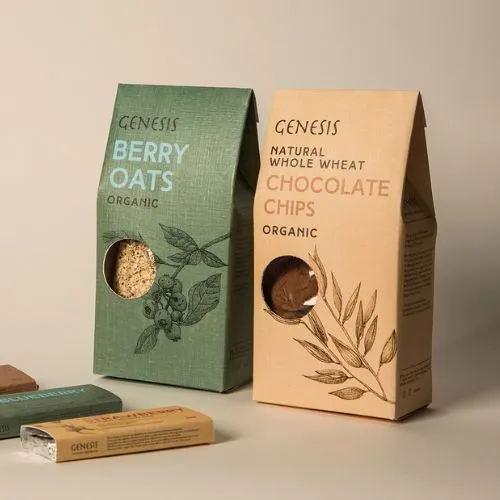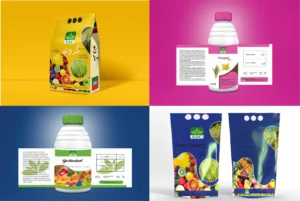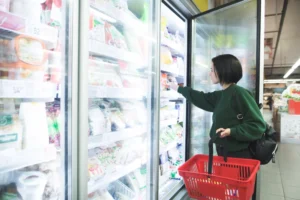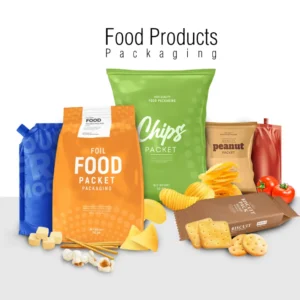In the agricultural sector, packaging for agrochemical products plays a...
Read MoreThe Future Unwrapped: A Deep Dive into Top Trends in Flexible Packaging for 2024

Flexible packaging has emerged as a cornerstone of the modern packaging industry, offering versatility, convenience, and sustainability. As we venture into 2024, the landscape of flexible packaging continues to evolve, driven by technological advancements, changing consumer behaviors, and a growing emphasis on environmental responsibility. In this comprehensive exploration, we’ll dissect the top trends that are set to shape the flexible packaging sector in the coming year, shedding light on innovations, strategies, and sustainability initiatives that will redefine the industry.
Sustainability Takes Center Stage:
In recent years, sustainability has become a paramount concern for both consumers and businesses alike.
With a rising awareness of environmental concerns, brands face mounting pressure to embrace sustainable packaging alternatives. In 2024, we anticipate a heightened focus on sustainability within the flexible packaging industry, with an emphasis on eco-friendly materials, recyclability, and circularity. Brands will increasingly turn to bio-based plastics, compostable films, and recycled materials to reduce their environmental footprint and meet the demands of eco-conscious consumers.
Additionally, initiatives such as lightweighting, source reduction, and carbon footprint reduction will gain traction as brands strive to minimize waste and conserve resources throughout the packaging lifecycle. Collaborative efforts across the supply chain will drive progress towards a more sustainable future for flexible packaging, with industry stakeholders working together to develop innovative solutions and implement best practices.
Smart Packaging Revolutionizes Consumer Engagement:
Advancements in digital technology are revolutionizing the way brands interact with consumers, and packaging is no exception. In 2024, we expect to see a surge in smart packaging solutions that leverage technologies such as near-field communication (NFC), QR codes, and augmented reality (AR) to deliver personalized experiences and enhance consumer engagement. Smart packaging enables brands to provide product information, track authenticity, and offer interactive content directly to consumers’ smartphones, fostering a deeper connection between brands and their audience.
Moreover, smart packaging offers valuable data insights that brands can use to optimize their marketing strategies, understand consumer behavior, and tailor their offerings to meet individual preferences. As the Internet of Things (IoT) continues to expand, smart packaging will play an increasingly integral role in shaping the future of consumer packaging, unlocking new opportunities for innovation and creativity.
Minimalism and Simplified Designs:
In an era characterized by sensory overload and information saturation, consumers are gravitating towards packaging designs that are clean, minimalist, and visually impactful. In 2024, we anticipate a shift towards simplified packaging designs that prioritize clarity, functionality, and aesthetic appeal. Brands will embrace minimalist design principles, opting for bold typography, subtle graphics, and cohesive color schemes that convey their message effectively and resonate with modern consumers.
Furthermore, minimalist packaging designs offer practical benefits such as increased shelf visibility, easier readability, and reduced production costs. By streamlining their packaging aesthetics, brands can create a cohesive brand identity that stands out in a crowded marketplace and resonates with consumers seeking simplicity and authenticity.
Personalization and Customization:
In an era of mass customization and individual expression, consumers crave personalized experiences that cater to their unique preferences and tastes. In 2024, we anticipate a surge in personalized packaging solutions that allow brands to tailor their offerings to the needs and desires of individual consumers. From customized graphics and messaging to personalized product recommendations and packaging sizes, brands will leverage data-driven insights to create bespoke packaging experiences that foster deeper connections with their audience.
Moreover, advances in digital printing technology will enable brands to implement variable data printing techniques, allowing for on-demand customization and rapid prototyping of packaging designs. By embracing personalization and customization, brands can differentiate themselves from competitors, enhance brand loyalty, and drive repeat purchases among discerning consumers.
Enhanced Barrier Properties for Food Safety:
Food safety remains a top priority for consumers, driving the need for packaging solutions that offer enhanced barrier properties to protect against contamination, spoilage, and tampering. In 2024, we anticipate a continued focus on barrier technology within the flexible packaging industry, with brands investing in advanced materials and coatings to ensure the integrity and freshness of packaged food products.
From oxygen and moisture barriers to antimicrobial coatings and active packaging solutions, brands will explore a range of innovative technologies to extend shelf life, preserve product quality, and enhance food safety. Moreover, intelligent packaging systems that incorporate sensors and indicators will provide real-time monitoring of product conditions, enabling brands to maintain optimal storage conditions and prevent food waste throughout the supply chain.
Circular Economy Initiatives:
The shift towards a circular economy is gaining momentum globally, with brands and governments increasingly recognizing the importance of reducing waste, conserving resources, and promoting recycling. In 2024, we anticipate a heightened emphasis on circular economy initiatives within the flexible packaging industry, with brands embracing sustainable practices such as recyclability, reusability, and compostability.
Brands will collaborate with packaging suppliers, recyclers, and waste management companies to develop closed-loop systems that facilitate the collection, recovery, and recycling of flexible packaging materials. Additionally, initiatives such as design for recyclability, extended producer responsibility (EPR), and product stewardship will drive progress towards a more sustainable and circular future for flexible packaging.
Conclusion:
As we look ahead to 2024 and beyond, the flexible packaging industry is poised for significant transformation. From sustainability initiatives and smart packaging solutions to minimalist design trends and circular economy initiatives, the top trends in flexible packaging reflect a commitment to innovation, sustainability, and consumer-centricity. By embracing these trends and leveraging the latest technologies, brands can position themselves for success in an ever-evolving marketplace, driving growth, and fostering long-term sustainability.
Tailored Solutions: Packaging Innovations for the Frozen Food Industry
In the fast-paced world of frozen food, packaging plays a...
Read MoreTailored Solutions: Packaging Innovations for Food Products
Packaging plays a pivotal role in the food industry, serving...
Read More

